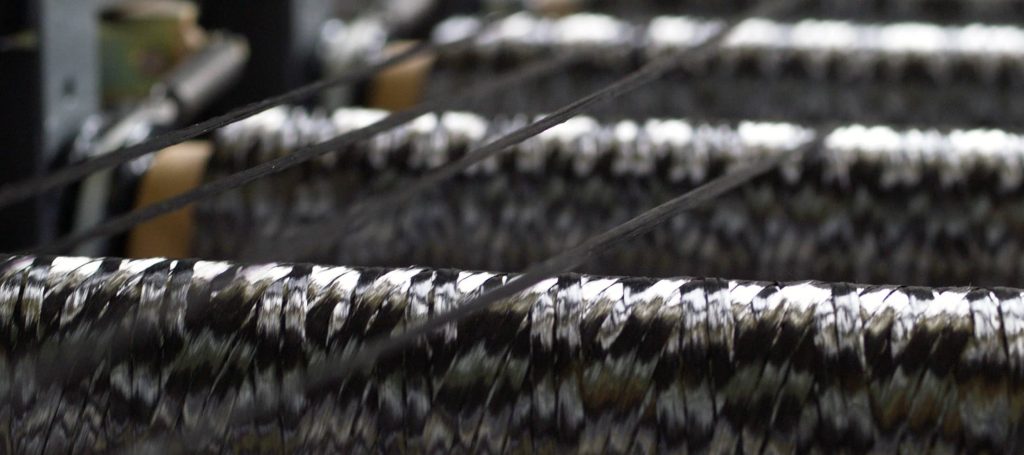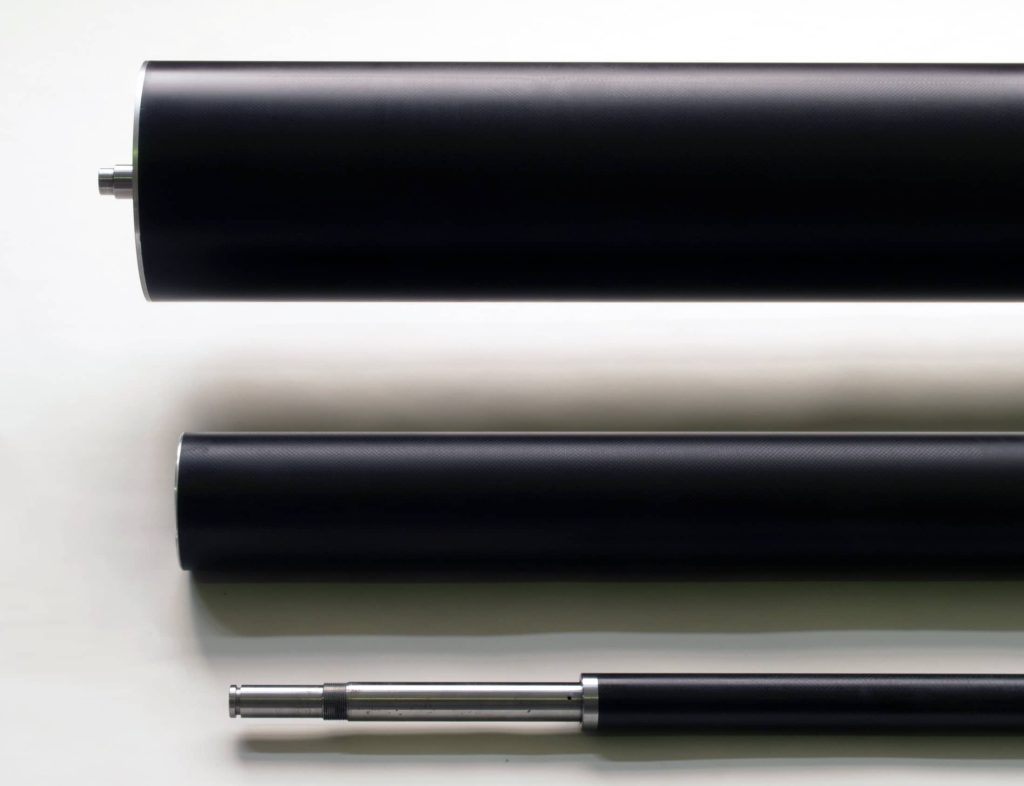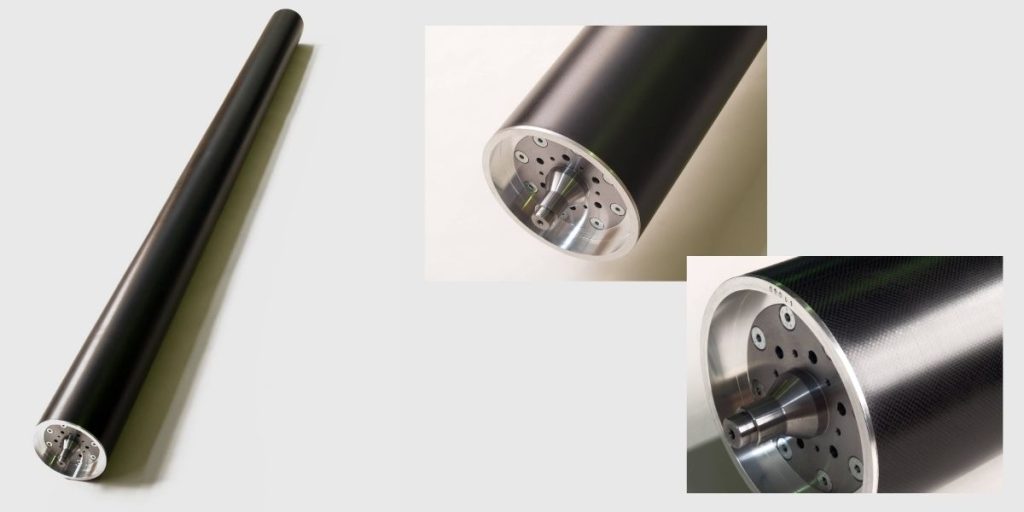Carbon fiber tubes
Carbon fiber and composites
Carbon fiber tubes may appear as simple items, but they happen to have special characteristics that make them versatile and suitable for a multitude of uses. They are made by using carbon fibers immersed in a polymer matrix: it is a composite material, which will have different properties depending on the characteristics required by the designer.
Carbon fiber: the raw material
Carbon fiber is a material with high mechanical strength, high tensile strength (a high Young’s modulus), a low density, as well as a high chemical and temperature resistance (source: Wikipedia, carbon fibers). It is produced through the pyrolysis of polymeric fibers (PAN) in a large oven within a controlled setting. That is where polymeric fibers made of polyacrylonitrile (PAN), known as the precursor, are simultaneously stretched and heated up to about 2000°, with an inert gas atmosphere to form carbon fibers through graphitization.
The choice of precursors (PAN – PITCH) and heat treatment grants a variety of materials for fibers with different properties:
- carbon fibers with a “standard” modulus of elasticity (200-250 GPa), with high mechanical resistance,
- carbon fibers with a high modulus of elasticity (up to 900 GPa), with lower mechanical resistance.
When producing carbon fiber tubes, an appropriate choice of the kind of fibers, along with the correct calculation of quantities and of deposition angles, allow the mechanical characteristics of the finished product to be finely modulated and meet the needs of customers.

Composites: semifinished materials
In order to build a mechanical piece by appropriately exploiting the excellent structural properties of carbon fibers, they need to be “tied” and “locked in place” inside a mechanical piece. To achieve this, the fibers are impregnated with epoxy resins. After solidification, these resins function as a binder for the fibers, allowing them to appropriately distribute stress through the piece. Carbon fibers are the structural reinforcement of a composite material, while the resin serves as a matrix of the material itself. The composite material that results from this process will have final mechanical properties that are proportional both to the volumes of those resins and fibers and to the angular directions of the fibers.
Technologies for carbon fiber tubes production

Nowadays a variety of technologies allows us to produce carbon fiber tubes, namely: pull winding, filament winding and sheet-wrapping. The sheet-wrapping process, the one employed by Reglass, grants the best results from a mechanical point of view and is used to make cylindrical elements and carbon fiber tubes.
Sheet-wrapping
This procedure consists in wrapping carbon fiber-based pre-impregnated (pre-preg) sheets around cylindrical metal moulds. Depending on the project’s specifications, different layers of pre-preg overlap, these layers may differ in terms of fiber type and thickness. This allows the finished tube to have the final properties required for each use.
Sheet-wrapping technology grants designers maximum freedom when choosing fiber types, the thicknesses (tubes with thicknesses ranging from 0.5 to tens of millimetres are made, in structural carbon), the quantity and the angle of fibers, while also obtaining the highest possible compactness, precision and quality of the composite.
Reglass’s carbon fiber tubes
Thanks to the use of this technology, Reglass’s tubes and rollers in carbon composite can reach a rigidity twice as high as that of steel, with a strength four times higher and a weight four times lower.
The carbon fiber-based composite is the most suitable material to replace conventional metal parts as it has mechanical properties typical of metal materials, along with the lightness that distinguishes polymeric materials. Add to these characteristics an exceptional corrosion resistance, paired with good resistance to many chemical agents and remarkable advantages can be obtained for a vast range of uses.
This is how they may be adapted to an impressive variety of uses: precision mechanics, robotics, packaging, motorized rollers, idle rollers, printing and converting rollers, expandable shafts, transmission shafts, anti-seismic devices fishing rods.
That is not all, as there are many other uses and specialized products. As a matter of fact, Reglass also manufactures ad-hoc products, to suit the specific needs of its customers. It conceives the project and carries out research in its laboratories, to offer the best solution for the creation of a semifinished product and of the most appropriate wrapping. That is how Reglass creates a product with high-performance features and functionalities, that perfectly meets all the standards for manufacturing purposes to be achieved, be they sports-related or of a different kind.

